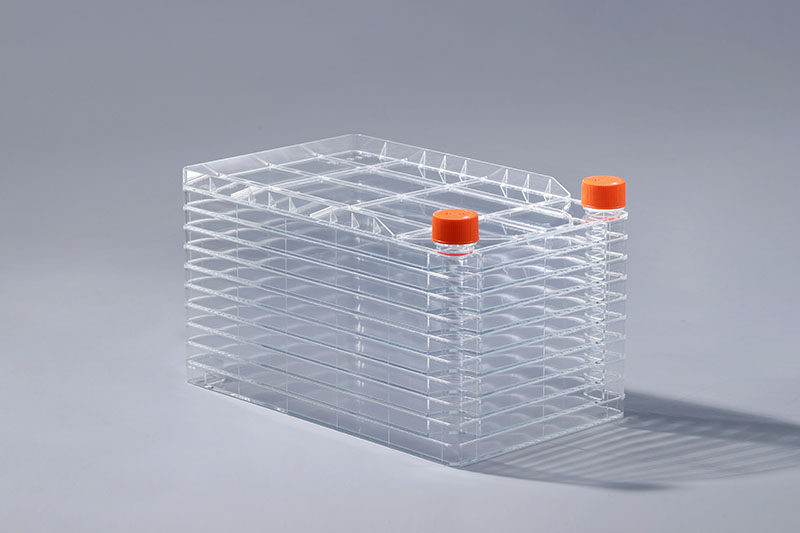은 폴리스티렌(PS) 원료로 만든 세포 배양 소모품입니다. 그것은 다층 구조 디자인을 채택합니다. 일반적인 사양은 1층, 2층, 5층, 10층, 40층입니다. 필요에 따라 레이어 수를 사용자 정의합니다. 그렇다면 이 특수 구조의 소모품에는 어떤 생산 공정이 사용됩니까?cell 공장에서 사용되는 사출 성형 공정은 주로 다음 단계를 포함합니다:cell factory
1. 사전 성형 공정:
사전 성형 공정은 플라스틱 재료를 가열, 운송, 압축, 전단, 혼합 및 배럴에서 균질화하여 재료를 유리 상태에서 점성 유체 상태로 변형시키는 것입니다. 사출 성형 요구 사항을 충족하십시오.
2. 사출 성형 공정:
사출 충전 단계에서 나사는 사출 실린더의 추력에 따라 노즐, 금형 러너 및 게이트를 통해 저장실의 용융물을 공동으로 주입합니다.
3. 압축 및 압축 공정:
수축으로 인해 부품이 비워진 부피를 채우기 위해 사출 성형을 계속합니다.
4. 냉각 및 설정 과정:
보유 압력이 끝나면 게이트가 동결됩니다. 기사는 냉각 및 설정 기간을 거칩니다.
5. 이젝션 픽업 프로세스:
일정 시간 냉각 후 제품은 일정한 강성과 강도를 갖습니다. 부품은 금형의 이젝터 핀에 의해 사출 금형에서 사출됩니다.
셀 공장 생산이 완료된 후 각 레이어를 조립해야하며 기밀성 등의 다양한 테스트를 거쳐야 공장을 떠날 수 있습니다. 및 불임. 세포가 더 잘 접착되도록 하려면 이 소모품도 표면에 TC를 처리하여 친수성 인자를 도입해야 합니다.
After the production of the cell factory is completed, each layer needs to be assembled, and then it can only leave the factory after various tests such as tightness and sterility. In order to ensure that cells can adhere better, this consumable also needs to be treated with TC on the surface to introduce hydrophilic factors.
The FAI climbed 5.9 percent year-on-year in the first 11 months of 2018, quickening from the 5.7-percent growth in Jan-Oct, the National Bureau of Statistics (NBS) said Friday in an online statement.
The key indicator of investment, dubbed a major growth driver, hit the bottom in August and has since started to rebound steadily.
In the face of emerging economic challenges home and abroad, China has stepped up efforts to stabilize investment, in particular rolling out measures to motivate private investors and channel funds into infrastructure.
Friday's data showed private investment, accounting for more than 60 percent of the total FAI, expanded by a brisk 8.7 percent.
NBS spokesperson Mao Shengyong said funds into weak economic links registered rapid increases as investment in environmental protection and agriculture jumped 42 percent and 12.5 percent respectively, much faster than the average.
In breakdown, investment in high-tech and equipment manufacturing remained vigorous with 16.1-percent and 11.6-percent increases respectively in the first 11 months. Infrastructure investment gained 3.7 percent, staying flat. Investment in property development rose 9.7 percent, also unchanged.
 English
English



















































